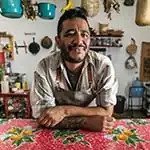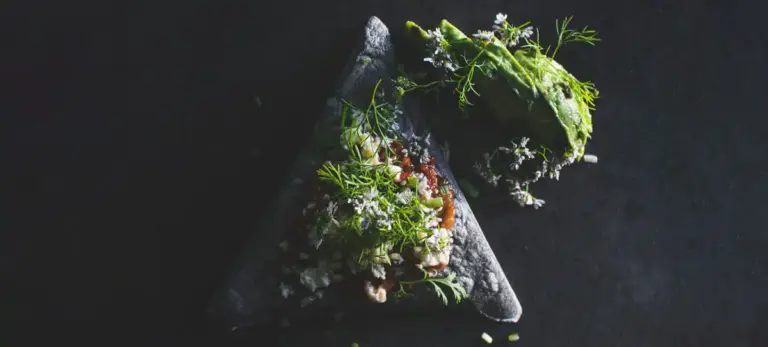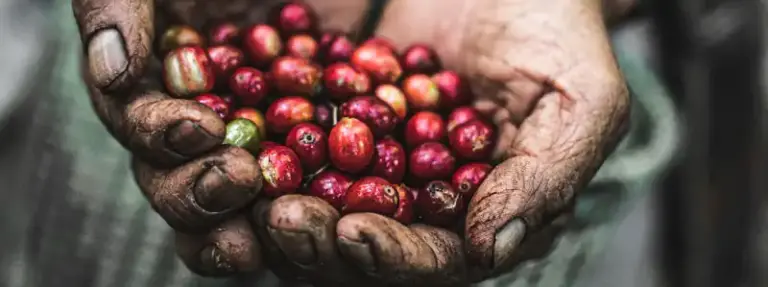When we talk about racism in Mexico, we usually think of blatant folks who openly despise black or indigenous people. A battle between good and evil in a Hollywood-style-film where the villain will be defeated, and once that goal is reached; there won’t be more darkness, and we’ll live happily ever after.
Unfortunately, real life is harsher than a superhero-villain-movie-script. In the case of racism, which has been discussed much more in recent months in Mexico, it’s the result of colonization centuries in this territory. In this article, I’ll try to dig deeper into the subject from my perspective and experience as a photographer and a very active cook in my community.
This text is a bit heavy and large. I don’t want the word limit to cut the intent, but I’ll try to be as amusing and straight to the point as possible.
If we want to address racism, which is a complex subject, it’s important to discuss some concepts, which I will tackle in sections.
Identity
We can define identity, without going into the philosophy department; as the set of features that distinguish us, either individually or collectively. It also includes the self-perception that we have as people and helps us differentiate ourselves from the rest. This identity gets a strong influence from the environment where we grow and interact.
Racism is part of our lives. It’s the cause for certain groups to experience discrimination, institutional violence, and inequality due to our skin color and origins. In this context, identity plays an important role, on the oppressive and the oppressed side.
These features define how we socialize and how society cast judgments and readings on people. It’s important to introduce the term hegemony. There’s a hegemonic group that has more power and dominance than others. White people.
To understand the hegemonic domain in which we live, we cannot forget the colonization that European countries have been conducting in the so-called global south. Africa, Southeast Asia, and Latin America (also called Abya Yala). To carry out this expansive process, it’s necessary to do it violently. It has led to slavery, genocide, and seizure of land ownership; under a condescending and eugenic discourse of racial superiority (remember that the racial concept is political, not biological).
After the territories’ invasion, the colonies’ settlement defined in the long-term, two processes. Mestizaje, and annihilation of the people that originally inhabited these regions. Both methodologies with the same objective. Whitewash the population while invisibilizing those who do not fit the eurocentric standards.
This brief colonization review is only a fragment of a whole long piece of history. As in all stories, there are characters and character types. According to their role, we have the protagonists, the antagonists, or tritagonists; according to their image, we have archetypes and stereotypes. Also relevant to this topic, main and secondary ones. But what do all these storytelling concepts have to do with the brief review of colonialism? Stay with me on this.
Colorism
A great way to detect and illustrate hegemony in a society is to pay attention to the stories we tell and how we do so. The storytelling which we are exposed to daily has a well-defined introduction-development-conclusion structure (even if the timeline is irregular). Those of us who work on storytelling learn that there are seven types of stories. These tools are handy to identify patterns in how character development is prioritized and its weight in the stories.
Within this storytelling scheme, and types of characters, we can see in the mainstream platforms (cinema, TV, and streaming services) a predominance of white main characters and protagonists. It’s also important to mention that there are people of color protagonists in movies and shows, but the white predominance is wider.
Beyond the percentage of main characters, it’s also important to note how good and evil are depicted. It’s generally a good-evil dichotomy, and the good guys have to defeat the bad guys to establish a balance in that story’s universe. Although there are nuances in the characters’ personalities, and they can switch teams; the story’s general balance tends to end in a happy ending that provides us with a state of peace and equilibrium provided by the victory of good over evil. While this is part of the drama, it helps us to immerse ourselves in realities other than a flat one from which we pause.
Returning to the main topic of this section. Evil is represented by people of color, as antagonists, villains, drug dealers, murderers, suspects, and good is represented by white people as protagonists, heroes, guides, saviors.
This hegemony represented in the stories is a reflection of the reality we live in. In Western societies, we’re taught that we must take care of certain people, certain types of people. The development of castes and slavery during the years in which colonization hasn’t stopped, on the contrary, it keeps adapting to continue perpetuating social domination. This point is controversial, -although it shouldn’t be-. Whiteness denies being the oppressive side, or the existence of oppression itself, because of either guilt or ignorance.
All this mix of narratives and perspectives on how to tell a story, and their relationship with how different realities are experienced. Together with the arduous work of denouncing and rethinking ways of telling stories that racialized people have had to carry out, has achieved that hegemony acknowledge the problems they’ve put them through. The problem I find is that, although we acknowledged poverty, marginalization, criminalization, and precariousness towards black and indigenous people. We haven’t recognized the historical responsibility on that machinery of which we’re part and benefit.
Mestizaje
About whiteness and mestizx; returning to the identities topic, the concept of mestizo is a way of erasing through mixing. The identity of a new nation (in this case the Mexican) is no longer indigenous or Spanish, but rather a hybrid of both, so that monolithic identity seeks to contain the entire population. Erasing other identities that continue to exist and, geographically, they didn’t have other option but to exist within the territory defined within those political borders.
Mestizaje as a narrative of a nation is also a story that we’ve been told, mainly in school, also in the tradition of identifying ourselves as Mexican people. In that story, those people who dare to identify themselves as something different are considered backward, ignorant, or inferior. Let’s remember that, according to that European and Criollo eye, the indigenous identity is out of date, and needs to be educated based on the new guidelines of progress, vanguard, and modernity that the mixture of races (defined politically, not biologically, I reiterate) has resulted. It’s desirable in the eyes of society. Don’t believe me? I challenge you to write about this on social media and wait for your contacts’ response.
Another time, it will be important to dig into how violent it’s to categorize as indigenous all people who do not identify as mestizo or Mexican; as a single category also created by the state. That topic alone is another complete article that also requires specialization on the subject, which I don’t have.
In other contexts, such as countries where mestizaje was not used as an erasure tool, but annihilation or isolation (Canada and the United States are good examples). It’s easy to differentiate whiteness only through skin color. Blond people who enjoy the hegemony privileges described above. However, in places like Mexico, where skin color continues to be a limitation for those with a darker color, the tone becomes a little more subtle as the skin lightens. Brunettes, even with black hair but with slightly lighter shades, can have access to education, health services and not be discriminated against, as long as we can whiten the image through clothing, accent, or body language.
If we understand this adaptation in terms of storytelling, we are modifying our character in the story to have certain characteristics, and this, reinforced with the status quo of Mexicanness, will help us to avoid that discrimination that we could suffer for other reasons, such as poverty or place of origin. It’s not that difficult to be a part of whiteness, that makes us (mestizxs), in practical terms, white people.
Storytelling from whiteness
I’d like to approach racism, which I have developed throughout this article, from a perspective and terrain familiar to me. Photography and storytelling are subjects that I’m passionate about and have been how I make a living through this project.
If we use the narrative tool again, telling stories and creating characters not only for clients. I think it’s fascinating how this is something we do daily, without having to work professionally on it. Telling stories is inherent to human nature, we’ve been doing it for centuries and it has been a great way to maintain the knowledge that we have generated, whether in writing or orally.
Although the techniques mentioned above have been formalized, we already spoke of villains or threats and had protagonists and antagonists. I’m not sure about dichotomies, but this topic could also sparkle another whole article.
There’s another relevant point that I haven’t dug yet. Who tells the stories? Who’s the voice of the stories? Who narrates the stories that we tell ourselves internally? This is where the criticism of hegemony comes in handy. The white voice that we hear in that dominance of stories, the white perspective that shows a white man as a hero, is the same voice that we tend to unconsciously replicate by convention or muscle memory. That’s what makes it hegemonic. I say this from a mestizo/white perspective, which is my reality. It is also important to mention that I cannot appropriate or talk about how black and/or racialized people tell stories in their heads because that’s not my reality.
And yet, a step further, even when the characters within the stories and who are part of them are not white; Is it a white person telling that story? This specific point is delicate because, even with the best intentions, if we want to tell a story that we do not know thoroughly, but superficially; We’ll probably tell it from a privileged perspective, idealizing other realities according to ours, making mistakes, inaccuracies and, even worse, using our platforms to spread our perception in the pursuit of benefit under the discourse of the good to those we choose to be in our stories.
We don’t know or have experienced the struggles that others have faced for centuries from this monster that strives to disappear them. I like to see it in terms of analogies: We are part of that monster that wants to erase them. So I think it takes a lot of humility to recognize it and then a lot of work to counter it.
In the same way that we tell stories through our work, we photograph people, but we also show ourselves to society, audiences, clients in certain ways, which also counts as storytelling.
The eugenicism that the colonizing discourse defines: The people we enslave and those we dominate are inferior. They’re not capable of developing or take care of themselves. So they need us to save them. This terrible conception gives rise to a character that I have met in my experience (and I have to admit that I’ve also replicated): The white savior.
At the beginning of this text, I used the example of cynical racists who accept, inadvertently or openly, their racism and contempt for racialized people. This character represents a villain in a context that is aware of racist expressions, in addition to the possibility of virality offered by social media. We pay attention to these obvious characters.
But in terms of racism, I find other characters more harmful; those characters who are not villains, or at least not the face they show. Villains disguised as benefactors, heroes, saviors; the storytelling configuration in which we live magnifies them. That white person who gives up their privileges to dedicate their life -or free time- to saving poor indigenous or black people, who cannot fend for themselves and continue to depend on us. The problem with this character and the worship of his archetype is that makes invisible the real problem. A sector of society that has been displacing, impoverishing, and killing another for centuries; stealing and plagiarizing their culture without proper retribution.
What is truly horrible about that story, in addition to the character, is the machinery that validates them and, as I said above, glorifies them. That engine and context seem more dangerous to me than the racist villain character who is only one more head of that hydra. That’s my most lucid way of defining racism because we all privileged people are part of that beast. Not only the influencer that we use as a scapegoat to wash away our guilt and responsibility within the society where we live. It’s not only about stopping discrimination but also about unlearning how we read people and beauty, the way we perceive ourselves personally. To have a lot of self-criticism about the judgments that we have made and that we continue to make. Stop glorifying or demonizing people based on their skin color or their accent.
It’s also important to rethink how we perceive ourselves when we tell stories; try to imagine other realities in those stories that we tell in our heads and the world. And when we are privileged white/mestizo people; How do we approach racialized people? Do we respect them when we tell their stories, or is it just patronization? What benefit do people get from our work? What benefit do we get from that work? What story are we telling and from what narratives? From which perspectives? Do we really know the reality that our models/characters have to face every day?
If you got this far, thank you very much, it’s a lot of text, and I understand that reading so much on the screen is heavy. If you have any comments to add to this discussion, please use the contact form to send me your impressions, conclusions, and comments about it. I know there are many questions to close an article. I want to leave it open for now, aiming to write a second article related to this and having a more specialized focus on photography and content creation.
Do you dedicate yourself to photography and content creation and also work with socially disadvantaged projects, people, or communities and want to add instead of causing harm? Follow me on my networks. I’ll be posting about the new updates to this content there.
References
- 15 Times Movies Used White Saviors That Caused Massive Eye Rolls
- RacismoMX
- How to be an Advocate Without Perpetuating the White Savior Complex – No White Saviors
- Élites y racismo: el privilegio de ser blanco (en México), o cómo un rico reconoce a otro rico | Economía y sociedad
- Racismo en México – Wikipedia
- Los pueblos indígenas no somos la raíz de México, somos su negación constante – EL PAÍS
- El falso argumento del “racismo inverso” que se debate en México – Verne México
- Entre blancos y güeros. Desigualdad y privilegio en el discurso popular – Cultura y vida cotidiana
- México racista – UNAM Global
- Tsääj. Monolitos – EL PAÍS México
- Racismo en México: discriminación estructural y desigualdad social – Contralínea
- El racismo que México no quiere ver – EL PAÍS





